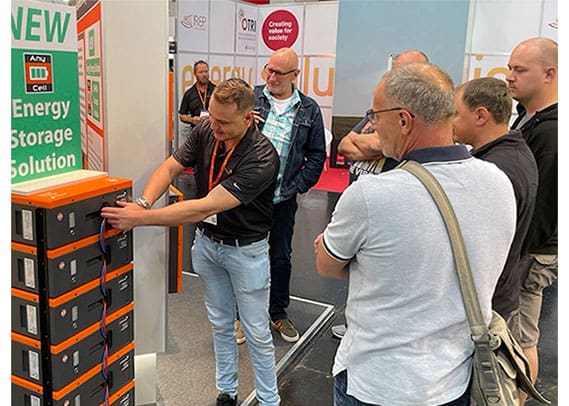
8 Considerations When Buying and Designing an Off-Grid System With A New DC Refrigerator / Freezer
After 20 years in the business, you can count on Phocos for expert industry tips. We support consumers who are choosing to purchase a DC refrigerator or freezer for the first time, or consumers who may be ready to upgrade their existing appliance. It is a big decision for many global customers. Of course, the goal is to purchase a quality appliance that works well, and has a long life to maximize your investment. Choosing the right product, understanding space considerations, and performance tips, will help you realize the best steps to make your investment in DC refrigeration perform well.
1. Does the manufacturer offer an option for fast cooling?
This is a new feature and to date, Phocos is the first and only manufacturer to put an option like this on the market with our FR-B Series that includes the BOOST feature. This new BOOST feature puts the consumer in control to temporarily accelerate cooling, quickly bring food and drinks to the target temperature. When this feature is not needed, the consumer can set the appliance to run on the standard maximum efficiency mode. It is as easy as clicking a switch and could be a feature that may make sense for some consumers.
2. Research the type of refrigerant the manufacturer offers
It is important to understand the options and what your home country’s regulations are. R134a refrigerant has been the common refrigerant from the past. However, regulations are changing, and many countries are in progress or have already transitioned to a more environmentally- friendly R600a refrigerant. Considering the environment and the rules of your country are important factors for decision making.
3. Design your space to assure the power source is as close to the refrigerator as possible
The longer the run of the wire from the power source to the DC refrigerator/freezer, the higher the power usage, in turn the less efficient a consumer is with their incoming power. When every watt counts, this is a critical design consideration for best practices.
4. How flexible is your DC appliance to grow and change with your needs?
When searching for a DC refrigerator or DC freezer today, it would be wise to think about your needs going forward. Maybe your usage will always be the same and maybe your conditions change? Sometimes it is easy to envision and sometimes it may not be clear. However, if you don’t have to pay more for a quality DC appliance that can adapt when conditions change, it would seem best to choose the flexible option. Some manufacturers make a DC refrigerator and then a separate unit that performs as a DC freezer, which is limiting when conditions change. However, you can find options for one DC appliance to perform as a refrigerator or a freezer, by simply adjusting the thermostat. This later option is ideal, so the initial investment in one DC appliance can be maximized no matter what your needs are in the future.
5. Create enough space for the DC appliance to not only fit into, but also allow for an air gap
Consumers must consider the size of the DC appliance desired and measure the space available. For best efficiency and operation, an air gap of a min 3″ around the DC refrigerator / freezer is optimal. This important detail often gets ignored or is not commonly known, but is vital to achieve the most efficient operation of your DC appliance.
6. Think of the space above the refrigerator for new storage options
When opting between an upright or a chest style DC refrigerator / freezer, this must be considered. You can utilize the space for a shelf or cabinet above a chest style DC refrigerator/freezer, that is more accessible than what is possible above a standard AC upright refrigerator/freezer.
7. In tight spaces, the lid of a DC chest style refrigerator/freezer can act as another preparation surface
When space is a concern, the lid can act as a surface for cutting boards, or a prepping shelf. This can be a permanent solution, as you can put adhesive on a material (butcher block/laminate) to work on, or this space can be functional on an ‘as needed’ basis, for flexibility.
8. When designing a system with solar and a DC refrigerator/freezer, you must reference the manufacturer’s datasheet
Power consumption is the foundation for a solar system’s design, so using the power consumption figures on the datasheet is vital for a smart investment upfront, and a system that will produce the best results long term. Working with real numbers is the only way to make sure a consumer will have a trouble-free experience, once installed, realizing the best ROI.
Many consumers using DC refrigerators or freezers are not readily close to where they purchase their food. When the food gets home, people must rely on their DC refrigerator / freezer to work properly and efficiently, to reduce food waste and maximize energy efficiency. Understanding some of these considerations upfront, will help with researching and selecting the proper DC appliance that fits your needs, your application, and your living environment.
Learn more about the Phocos efficient DC Chest Refrigerator/Freezer (FR-B Series)
Need general design guidelines to understand the solar and battery capacity needed in different climates around the world, to run the FR-B Series?












